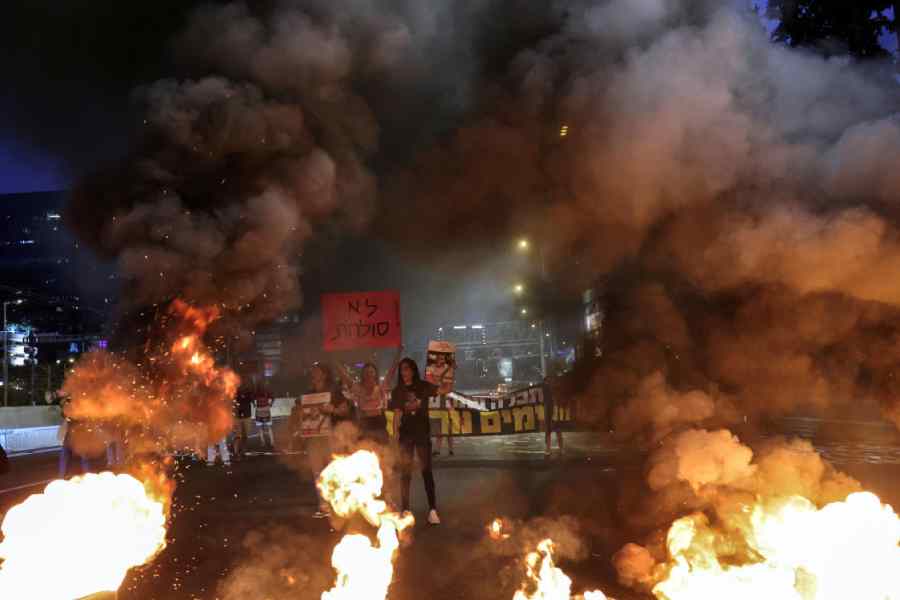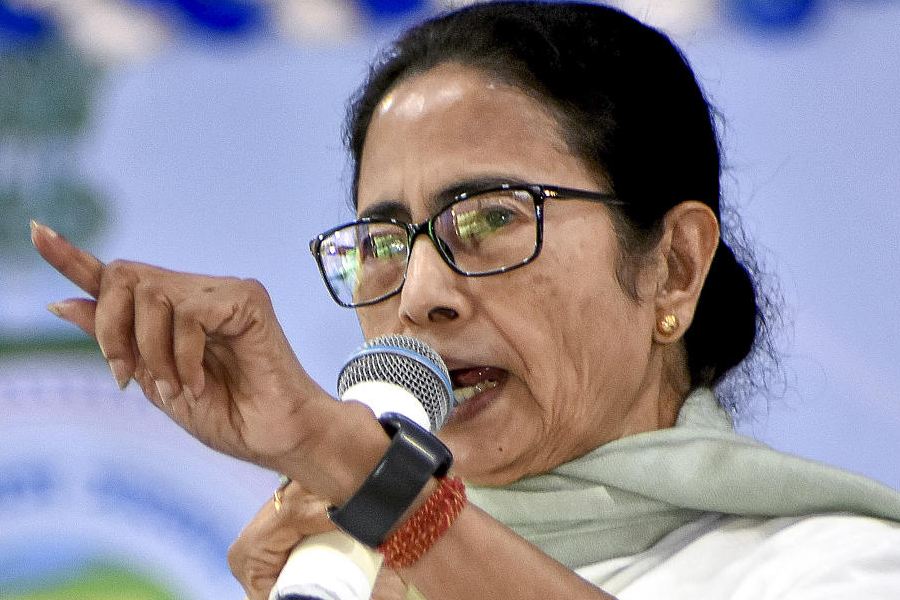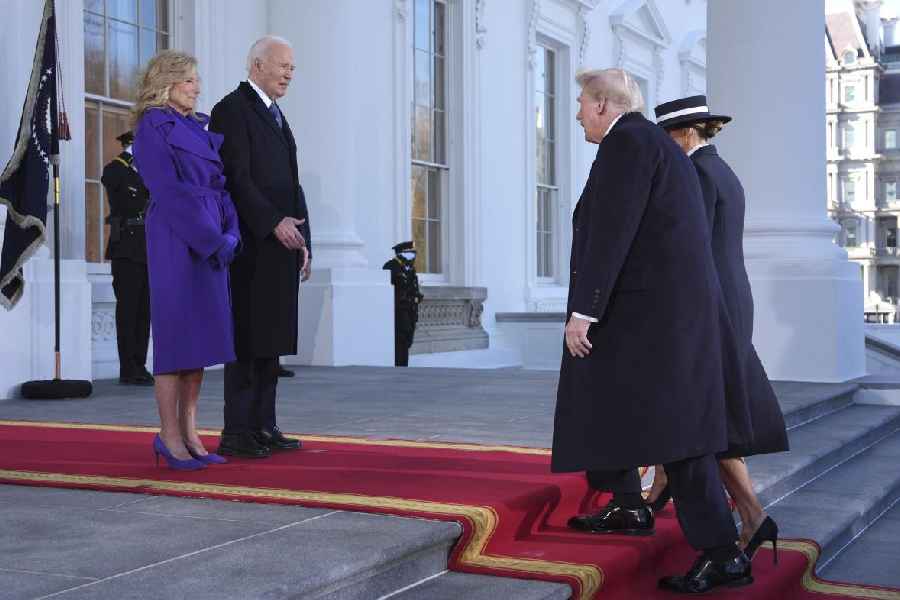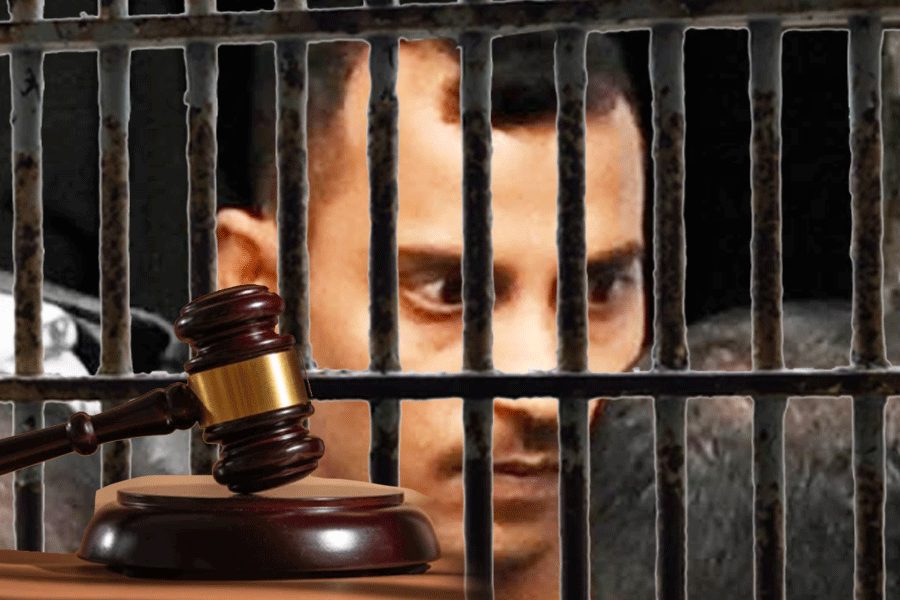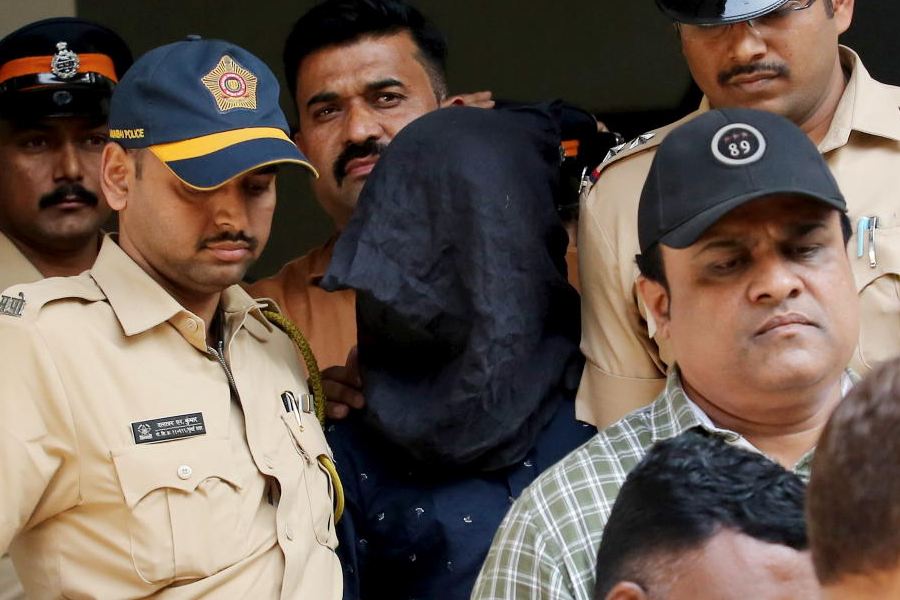For more than two years, Yahya Sinwar huddled with his top Hamas commanders and plotted what they hoped would be the most devastating and destabilising attack on Israel in the militant group’s four-decade history.
Minutes of Hamas’s secret meetings, seized by the Israeli military and obtained by The New York Times, provide a detailed record of the planning for the October 7 terrorist attack, as well as Sinwar’s determination to persuade Hamas’s allies, Iran and Hezbollah, to join the assault or at least commit to a broader fight with Israel if Hamas staged a surprise cross-border raid.
The documents, which represent a breakthrough in understanding Hamas, also show extensive efforts to deceive Israel about its intentions as the group laid the groundwork for a bold assault and a regional conflagration that Sinwar hoped would cause Israelto “collapse”.
The documents consist of minutes from 10 secret planning meetings of a small group of Hamas political and military leaders in the run-up to the attack, on October 7, 2023. The minutes include 30 pages of previously undisclosed details about the way Hamas’s leadership works and the preparations that went into its attack.
The documents, which were verified by The Times, lay out the main strategies and assessments of the leadership group:
Hamas initially planned to carry out the attack, which it code-named “the big project”, in the fall of 2022. But the group delayed executing the plan as it tried to persuade Iran and Hezbollahto participate.
As they prepared arguments aimed at Hezbollah, the Hamas leaders said that Israel’s “internal situation” — an apparent reference to turmoil over Prime Minister Benjamin Netanyahu’s contentious plans to overhaul the judiciary — was among the reasons they were “compelled to move toward a strategic battle”.
In July 2023, Hamas dispatched a top official to Lebanon, where he met with a senior Iranian commander and requested help with striking sensitive sites at the start of the assault.
The senior Iranian commander told Hamas that Iran and Hezbollah were supportive in principle, but needed more time to prepare; the minutes do not say how detailed a plan was presented by Hamas to its allies.
The documents also say that Hamas planned to discuss the attack in more detail at a subsequent meeting with Hassan Nasrallah, Hezbollah’s leader at the time, but do not clarify whether the discussion happened.
Hamas felt assured of its allies’ general support, but concluded it might need to go ahead without their full involvement — in part to stop Israel from deploying an advanced new air-defence system before the assault took place.
The decision to attack was also influenced by Hamas’s desire to disrupt efforts to normalise relations between Israel and Saudi Arabia, the entrenchment of Israel’s occupation of the West Bank and Israeli efforts to exert greater control over the Aqsa mosque compound in Jerusalem, sacred in both Islam and Judaism and known to Jews as the Temple Mount.
Hamas deliberately avoided major confrontations with Israel for two years from 2021, in order to maximise the surprise of the October 7 attack. As the leaders saw it, they “must keep the enemy convinced that Hamas in Gaza wants calm”.
Hamas leaders in Gaza said they briefed Ismail Haniyeh, Hamas’s Qatar-based political leader, on “the big project”. It was not previously known whether Haniyeh, who was assassinated by Israel in July, had been briefed on the attack before it happened.
Prelude to war
The documents provide greater context to one of the most pivotal moments in modern West Asian history, showing it was both the culmination of a yearslong plan, as well as a move partly shaped by specific events after Netanyahu returned to power in Israel in late 2022.
The attack on Israel killed roughly 1,200 people and prompted Israel to bombard and invade Gaza, killing tens of thousands of Palestinian civilians and militants. It ultimately expanded into a broader war between Israel and Hamas’s regional allies, leading to Israel’s assassination of senior Iranian and Hezbollah leaders and its invasion of Lebanon, as well as to Iran’s ballistic missile strikes on Israel.
The extent to which Iran and Hezbollah knew about Hamas’s initial plans has been one of the persistent mysteries of October 7. The question took on new resonance in recent weeks, after Israel’s invasion of Lebanon and Iran’s strikes on Israel.
Iran’s supreme leader, Ayatollah Ali Khamenei, has publicly denied that Iran had any role in the October 7 attack. And American officials have described intelligence showing key Iranian leaders were caught by surprise, fueling doubts that Iran played a direct role in planning. But Hamas leaders have spoken broadly about the support they have received from regional allies, and there have been scattered and sometimes conflicting reports that Iranian and Hezbollah officials helped plan the attack and train fighters.
The minutes were discovered on a computer found in late January by Israeli soldiers as they searched an underground Hamas command centre in Khan Younis, in southern Gaza, from which the group’s leaders had recently escaped.
The Times assessed the documents’ authenticity by sharing some of their contents with members of and experts close to Hamas. Salah al-Din al-Awawdeh, a Hamas member and a former fighter in its military wing who is now an analyst based in Istanbul, said that he was familiar with some of the details described in the documents and that keeping organised notes was consistent with the group’s general practices.
The Israeli military, in a separate internal report obtained by The Times, concluded the documents were real and represented another failure by intelligence officials to prevent the October 7 attack.
The discovery of these records has set off recriminations among Israel’s intelligence agencies.
The Israeli military declined to comment. Hamas and Hezbollah did not respond to requests for comment. Iran’s Mission to the United Nations denied the claims made in the minutes.
“All the planning, decision-making and directing were solely executed by Hamas’s military wing based in Gaza, any claim attempting to link it to Iran or Hezbollah — either partially or wholly — is devoid of credence and comes from fabricated documents,” the Iranian statement said.
The documents first hint at the operation in January 2022, when the minutes show that Hamas leaders discussed the need to avoid getting dragged into minor skirmishes to focus on “the big project”. Israeli intelligence officers found that Hamas leaders repeatedly used the same phrase in similar contexts, but the officers did not understand what the term meant until reading the documents after the assault, according to two Israeli officials familiar with intelligence about Hamas commanders.
The minutes do not provide a clear list of every person at each meeting, but they state that Sinwar attended all of the discussions, while his deputy joined at least three. Several military commanders referred to by only their noms de guerre are also listed as having attended.
Israeli intelligence analysts, according to several Israeli officials and the military’s assessment of the documents, concluded that Hamas’s top military leaders, Muhammad Deif, Marwan Issa and Muhammad Sinwar, were among those listed by nickname. The Palestinian analyst with knowledge of Hamas’s inner workings also said he believed the minutes showed Deif was present.
During a meeting in April 2022, the leaders celebrated how the tensest parts of Ramzan had passed without major escalation, helping Hamas to “hide our intentions” and “camouflage the big idea (our big project)”. They spoke about conserving ammunition and carrying out “a large and convincing disguise and deception process”.
In June 2022, the leaders said the operation was continuing to gather momentum: They noted that Hamas avoided a clash with Israel after Jewish ultranationalists held a provocative march through the Old City of Jerusalem in late May, fostering the false impression that the group no longer sought a major confrontation. While Hamas leaders have spoken vaguely in public about how they tried to deceive Israel in the years leading to the attack, the minutes reveal the extent of that deception.
At this point, preparations for the attack were roughly a month from completion, according to the June 2022 minutes. The plans included striking 46 positions staffed by the Israeli military division that guards the border, and then targeting a major air base and intelligence hub in southern Israel, as well as cities and villages.
The leaders said it would be easier to target those residential areas if the military bases were overrun first — a prediction that proved to be correct on October 7.
Gathering in September 2022, the leadership council seemed ready to begin the attack within a month, during the Jewish high holidays, and Sinwar reviewed the latest battle plans. The documents do not explain why the attack was postponed, but a recurring theme is the Hamas leadership’s effort to enlist support for the operation from Iran and Hezbollah.
Courting allies
In December 2022, a new far-Right government took office in Israel, returning Netanyahu to power. Hamas leaders noted at a meeting the following month that they needed time to assess the government’s behaviour, saying that Itamar Ben-Gvir, a far-Right minister known for his provocative actions toward Palestinians, had already made a contentious tour of the Aqsa mosque compound.
The leaders predicted that the actions of the government “will help us with moving toward the big project” by attracting the attention of Hamas’s allies and bolstering support for their attack.
At a meeting in May 2023, Sinwar and his colleagues seemed ready to finalise plans for the attack. According to the minutes, the leaders debated whether to launch it on September 25, when most Israelis would be observing Yom Kippur, the most hallowed day in the Jewish calendar, or on October 7, which coincided that year with the Jewish holy day of Simchat Torah.
Hamas planned to present the attack to Hezbollah, according to the documents, as a way of derailing efforts to normalise relations between Israel and Saudi Arabia, a move that would have further integrated Israel within West Asia without fully resolving the Israeli-Palestinian conflict.
According to the minutes from an August 2023 meeting, Sinwar’s deputy, Khalil al-Hayya, discussed the plan the previous month with the senior Iranian commander, Mohammed Said Izadi of Iran’s Islamic Revolutionary Guards Corps, who was based in Lebanon and helped oversee Tehran’s relations with Palestinian armed groups. Those minutes also said al-Hayya intended to raise it with Nasrallah, the Hezbollah leader.
The meeting with Nasrallah was postponed, and the minutes of later meetings do not clarify whether the Hamas deputy was able to eventually present that argument to him in person.
New York Times News Service

